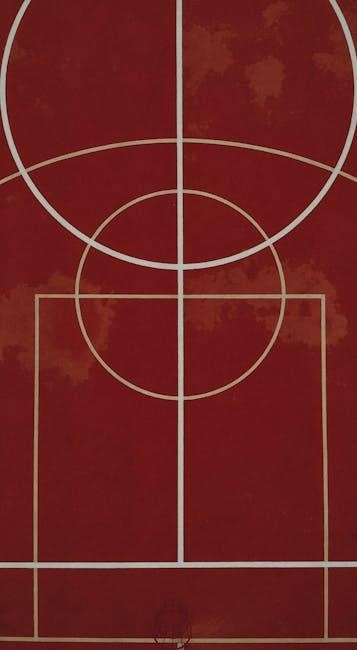
Biofinity Multifocal lenses by CooperVision are monthly replacement contacts designed for individuals with presbyopia, offering clear near, intermediate, and far vision with Aquaform Technology for enhanced comfort and breathability.
What Are Biofinity Multifocal Lenses?
Biofinity Multifocal lenses are monthly replacement contact lenses designed to address presbyopia, offering clear vision at near, intermediate, and far distances. Made from silicone hydrogel material, they prioritize comfort and breathability with CooperVision’s Aquaform Technology. These lenses feature a near/distance dominant design, optimizing performance for everyday activities. They are also available in toric versions for individuals with astigmatism, ensuring a tailored fit for diverse eye needs while maintaining sharp focus and long-lasting comfort.

Who Can Benefit from Biofinity Multifocal Lenses?
Biofinity Multifocal lenses are ideal for individuals with presbyopia, a common age-related condition causing difficulty in focusing on close objects. They suit people seeking clear near, intermediate, and far vision without the hassle of glasses. These lenses are also suitable for those with astigmatism, thanks to the toric version, and are a great option for active lifestyles requiring sharp focus at varying distances. They are designed to enhance comfort and visual clarity for everyday tasks, making them a versatile choice for many wearers.
Why Choose Biofinity Multifocal?
Biofinity Multifocal lenses are chosen for their advanced design, offering seamless transitions between near, intermediate, and far vision. Made with Aquaform Technology, they provide exceptional breathability and comfort, making them ideal for extended wear. These lenses cater to individuals with presbyopia and astigmatism, offering a convenient monthly replacement schedule. Their durability and ability to maintain moisture ensure long-lasting comfort, making them a preferred choice for those seeking a natural and clear visual experience without the need for glasses.

Understanding Your Prescription
Your contact lens prescription includes essential measurements like sphere, cylinder, axis, add power, base curve, and diameter, ensuring Biofinity Multifocal lenses fit and correct your vision accurately.
Key Components of a Contact Lens Prescription
A contact lens prescription includes sphere (corrects nearsightedness or farsightedness), cylinder (addresses astigmatism), axis (specifies astigmatism direction), add power (for presbyopia), base curve (matches cornea shape), and diameter (ensures proper fit); These measurements are crucial for selecting the right Biofinity Multifocal lenses, ensuring clear vision and comfort. Understanding these components helps in accurately fitting the lenses to meet individual vision needs.
Interpreting Sphere, Cylinder, Axis, and Add Power
The sphere corrects myopia or hyperopia, cylinder and axis address astigmatism, and add power compensates for presbyopia. Sphere is in diopters (positive for hyperopia, negative for myopia). Cylinder measures astigmatism’s strength, with axis indicating its direction. Add power boosts near vision. Proper interpretation ensures Biofinity Multifocal lenses are tailored to individual needs, optimizing clarity at all distances. Accurate measurements are vital for a successful fitting and patient satisfaction.
Importance of Base Curve and Diameter
The base curve and diameter are crucial for ensuring Biofinity Multifocal lenses fit comfortably and correctly. The base curve matches the cornea’s shape, preventing discomfort or excessive lens movement. Proper diameter ensures the lens covers the iris appropriately without causing irritation. Incorrect measurements can lead to poor vision or discomfort. CooperVision’s Aquaform Technology enhances comfort and breathability, making accurate measurements essential for optimal lens performance and long-term patient satisfaction.

Preparing for the Fitting
A comprehensive eye exam, detailed medical history, and lifestyle discussion are essential before fitting Biofinity Multifocal lenses. Ensuring the right tools and tests are available guarantees an accurate fit.
Necessary Tests and Tools
Key tests include binocular visual acuity assessment and monocular testing to identify vision discrepancies. Over-refraction with trial lenses ensures precise correction. Tools like phoropters and keratometers measure corneal curvature and refractive errors. These steps help determine the correct power and design, ensuring optimal fit and vision clarity for Biofinity Multifocal lenses.
Consultation and Patient History
A thorough consultation involves discussing the patient’s lifestyle, visual needs, and expectations. Understanding their daily activities and preferences helps tailor the fitting process. Reviewing the patient’s ocular and medical history is crucial to identify any conditions that may affect lens performance. Open communication ensures alignment with the patient’s goals, fostering trust and setting realistic expectations for their Biofinity Multifocal experience.
Lifestyle Considerations for Multifocal Lenses
Lifestyle considerations play a significant role in the success of Biofinity Multifocal lenses. Patients who lead active lives, work on computers, or enjoy hobbies requiring clear near and far vision benefit most. Discussing daily activities, such as reading or driving, helps tailor the fitting to their needs. Understanding their work environment and leisure pursuits ensures the lenses align with their lifestyle, optimizing both comfort and visual performance. This personalized approach enhances patient satisfaction and adapts the lenses to real-world use.

The Fitting Process

The Biofinity Multifocal fitting process involves initial evaluations, monocular and binocular testing, and over-refraction with trial lenses to ensure optimal vision and comfort.
Step 1: Initial Evaluation
The initial evaluation assesses the patient’s visual acuity, refraction, and corneal health. Measure binocular and monocular acuity to establish a baseline. Perform over-refraction to determine the prescription’s accuracy. Evaluate the patient’s lifestyle and visual needs to guide lens selection. Review medical history for conditions that may affect lens tolerance. Ensure the base curve and diameter match the cornea for proper fit. This step sets the foundation for a successful fitting process.
Step 2: Monocular and Binocular Testing
Monocular testing evaluates each eye’s visual acuity separately, while binocular testing assesses how the eyes work together. Use trial lenses to measure distance and near vision. Ensure the dominant eye is optimized for distance clarity. Check for any discrepancies in vision between the eyes. This step ensures balanced vision and proper lens alignment. Adjustments are made to refine the prescription and enhance visual comfort, ensuring both eyes function seamlessly together for optimal multifocal performance.
Step 3: Over-Refraction and Trial Lenses
Over-refraction with trial lenses refines the prescription, ensuring optimal vision at all distances. Evaluate visual acuity, starting with distance, then intermediate, and near. Adjust the power in 0.25D increments to balance clarity and comfort. Fine-tune the lenses to address any discrepancies, ensuring both eyes work seamlessly. This step ensures the final prescription meets the patient’s specific needs, providing sharp, clear vision for daily activities. Proper over-refraction is key to achieving satisfied, adaptable multifocal lens wearers.

Selecting the Right Lens Parameters
Selecting the correct power, add, and design ensures optimal vision and comfort. Consider near or distance dominance and use Aquaform Technology for superior breathability and clarity.
Determining the Correct Power and Add
Determining the correct power and add for Biofinity Multifocal lenses involves evaluating binocular and monocular visual acuity. Start by assessing distance vision with trial lenses, then test near vision to ensure clarity. Adjust the add power based on performance in both eyes. For patients with uneven vision, prioritize the worse eye. Fine-tune the prescription by incrementally modifying the add power and verifying comfort. This step ensures balanced vision and optimal comfort for daily activities.
Near vs. Distance Dominant Designs
Biofinity Multifocal lenses offer both near and distance dominant designs to cater to varying patient needs. The near dominant design prioritizes sharp near vision, while the distance dominant design emphasizes clear distance vision. Determine the dominant eye and adjust the add power accordingly. For distance enhancement, add 0.25D to the dominant eye, ensuring near vision remains functional. This balanced approach ensures optimal visual clarity for daily tasks, whether reading or driving, with minimal compromise in either range.
Ensuring Proper Fit and Comfort
Proper fit is crucial for comfort and vision clarity with Biofinity Multifocal lenses. The base curve and diameter must align with the patient’s cornea for optimal positioning. Use trial lenses to assess centration and movement. Ensure the lens doesn’t ride high or cause irritation. Follow-up appointments are essential to monitor adaptation and address any discomfort. Patient-specific adjustments, like refining the add power or dominant eye design, can enhance comfort and visual performance, ensuring a seamless wearing experience for individuals with presbyopia.

Follow-Up and Aftercare
Regular follow-ups ensure optimal performance and comfort; Monitor vision clarity, lens fit, and patient adaptation. Adjustments may be needed to refine vision and comfort levels.
Importance of Follow-Up Appointments
Regular follow-ups are crucial for ensuring Biofinity Multifocal lenses perform optimally. These appointments allow eye care professionals to monitor lens adaptation, check for any discomfort, and assess vision clarity at all distances. Adjustments to power or fit may be necessary to enhance comfort and visual acuity. Consistent aftercare helps prevent complications and maintains long-term eye health, ensuring the best possible outcome for patients with presbyopia.
Monitoring Lens Performance
Monitoring lens performance ensures Biofinity Multifocal lenses meet visual and comfort needs. Eye care professionals assess clarity at various distances, check for adaptation, and evaluate comfort levels. They also inspect the lenses for deposits or damage. Regular checks help maintain optimal vision and prevent issues like dryness or irritation. This step is vital for long-term satisfaction and eye health, ensuring the lenses continue to correct presbyopia effectively.
Adjustments and Fine-Tuning
Adjustments and fine-tuning are critical to optimizing Biofinity Multifocal lens performance. Eye care professionals may modify power, add power, or design based on patient feedback and visual acuity tests. Enhancing distance or near vision without compromising the other is key. Comfort issues may require reevaluating fit or material. These adjustments ensure personalized correction of presbyopia, maximizing clarity and comfort for a seamless wearer experience.

Troubleshooting Common Issues
Biofinity Multifocal wearers may experience blurry vision or discomfort. Assessing fit, power, and lens design helps identify issues. Adjustments or alternative lenses can resolve problems effectively.
Addressing Blurry Vision or Discomfort
Blurry vision or discomfort with Biofinity Multifocal lenses can stem from improper fit, power mismatches, or design incompatibility. Assess monocular and binocular vision to identify the issue. Over-refraction and trial lenses can help refine the prescription. If discomfort persists, ensure proper base curve and diameter alignment with the cornea. Consider adjusting the add power or switching to a distance-dominant design for better visual balance. Patient adaptation time and lifestyle factors should also be evaluated to optimize comfort and clarity.
Resolving Fit-Related Problems
Fit-related issues with Biofinity Multifocal lenses often arise from incorrect base curve or diameter. Ensure the lens matches the corneal shape by using keratometry readings. If sliding or centration is off, reassess the fit parameters. Proper alignment is crucial for multifocal zones to function effectively. Using trial lenses can help confirm the optimal fit. Addressing these issues ensures long-term comfort and visual clarity, making the fitting process more efficient and patient satisfaction higher. Regular follow-ups are recommended to monitor fit consistency.
Enhancing Patient Satisfaction
Enhancing patient satisfaction with Biofinity Multifocal lenses begins with clear communication and realistic expectations. Ensure patients understand the adaptation period and potential for initial visual compromises. Highlight the benefits of Aquaform Technology for comfort and breathability. Address lifestyle needs by tailoring lens parameters to daily activities. Provide detailed care instructions and emphasize the importance of follow-ups. By prioritizing comfort, clarity, and personalized fitting, you can maximize patient satisfaction and confidence in their Biofinity Multifocal experience.
Biofinity Multifocal lenses offer a successful solution for presbyopia, combining comfort and clarity. Their advanced design and Aquaform Technology ensure a superior wearing experience, making them a top choice for patients seeking versatile, high-performance multifocal correction.
The fitting process for Biofinity Multifocal lenses involves evaluating binocular visual acuity, conducting monocular testing, and performing over-refraction to ensure optimal vision at all distances. Proper base curve and diameter selection are crucial for comfort and alignment with the cornea. Patient-specific adjustments, such as modifying add power or dominant eye design, are essential for addressing near and distance vision needs. Regular follow-ups and open communication with patients ensure long-term satisfaction and proper lens performance.
Final Tips for Successful Biofinity Multifocal Fittings
- Start with a thorough patient consultation to understand lifestyle and visual demands.
- Use trial lenses to assess real-world performance and make necessary adjustments.
- Document findings and communicate clearly with patients about expectations and outcomes.
- Schedule follow-up appointments to fine-tune the fit and address any concerns.
By prioritizing patient-specific needs and leveraging trial lenses, you can achieve optimal results and enhance patient satisfaction with Biofinity Multifocal lenses.